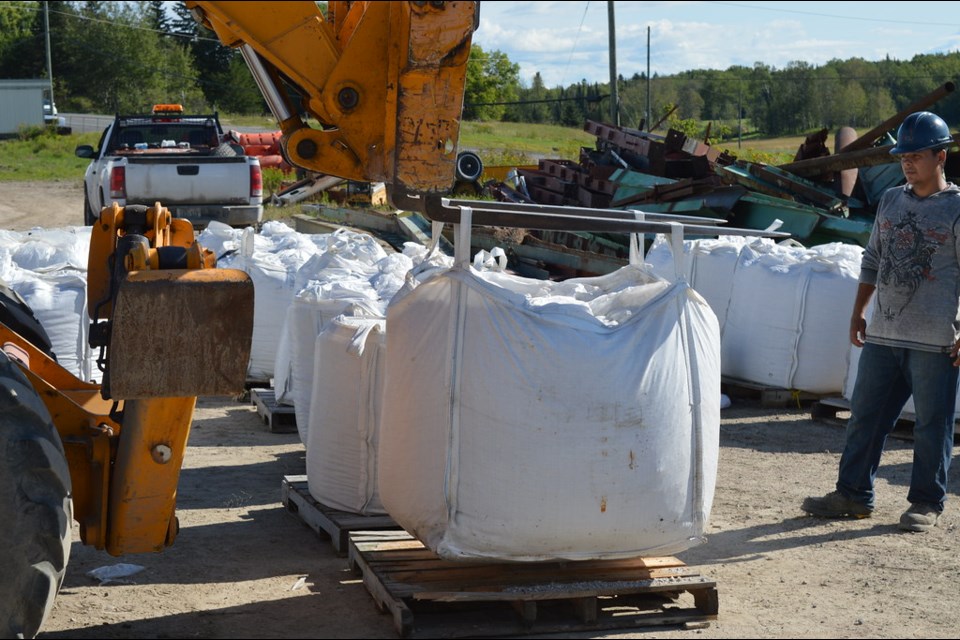Security of critical minerals supply has now become a major concern for government in light of the COVID-19 disruption to global supply chains. A North American solution is required to reduce reliance on China as a sole source of supply of many of our critical minerals.
North America does not have the full supply chains needed for many new technologies – such as electric vehicles, energy storage, sensor and data processing applications) and pharmaceuticals – although we do have all these minerals in the ground.
Northern Ontario is blessed with resources of many of these critical minerals, often referred to as “technology metals," including all the elements needed in lithium-ion battery technology.
So why aren’t we already taking advantage of this rich mineral endowment to establish rechargeable battery manufacturing capacity in Ontario?
The answer lies in regulatory policy that has not adapted to the unique circumstances developers of non-traditional mineral commodities, like lithium, are facing.
Regulatory change is clearly needed, as mining regulations are effectively blocking these supply chain developments.
Historically, the Canadian mining industry has been oriented towards extraction of bulk or exchange-traded commodities, such as gold. Such mined commodities have had essentially unlimited markets – encouraging large-scale operations designed to keep unit operating costs low.
In contrast, many critical minerals have small but growing markets, meaning that initial production should be at a small scale, with production increasing as demand grows.
Canada’s mining regulations have evolved over time to manage potential impacts to the land and consequent environmental risks associated with large mining operations.
At the exploration and pre-production stages, securities regulations have evolved to manage and reduce speculative investment risk in exploration oriented towards gold and other exchange-traded metallic commodities.
These regulations were effective in the past, but are not as relevant for the future, which will be increasingly focused on newly emerging technology metals.
This is because most of these non-traditional mineral commodities are not commodities at all in the traditional sense of the term. Rather, they are manufactured products that require extensive processing to be utilized in new technology applications.
Thus, at the early stage, drilling off the largest, highest grade resource you can find is not the primary objective.
The work is instead focused on test sampling to determine if the resource is amenable to production of the desired derivative material, then producing trial quantities for customer qualification.
Once the process is proven, new developers must begin supplying the market quickly, which means initiating small-scale production as soon as possible.
Mining industry regulations in Canada never contemplated the consequences of new technology, what minerals would be needed in the future, or how the industry would evolve to produce them.
They also never contemplated how new, more efficient extraction technologies can dramatically reduce the environmental impacts typically associated with mineral processing and can even have beneficial impacts by recovering critical minerals from historic mine wastes.
Critical minerals are required to transition to the low-carbon future policymakers envision.
According to Minerals for Climate Action, a recently published report from the World Bank Group, production of battery materials such as graphite, lithium, manganese and cobalt (all of which occur in Northern Ontario!) will have to increase by nearly 500 per cent by 2050 to meet the growing demand for clean energy technologies.
Fortunately, policymakers in government are now listening as they try to incentivize creation of these new supply chains.
Public support is there as well.
The Mining Association of Canada recently released a national poll which showed that 90 per cent of those surveyed like the idea of Canada being a preferred source for critical minerals and would like to see government take action to help make it happen.
A well-structured and informed strategy could also revitalize the economies in Northern Ontario that have traditionally relied on natural resource development.
It will also create new economic opportunities for remote First Nation communities looking for ways to participate in the new clean economy to create wealth and prosperity for future generations.
Northern Ontario has the opportunity to provide global leadership in establishing new critical minerals supply chains.
We have the resources and knowledge to establish sustainable mineral production and manufacture the derivative products needed in rechargeable battery, electric vehicle, wind turbine and solar panel technologies.
It simply involves cutting the regulatory red tape frustrating entrepreneurs in the sector, then encouraging end users in the clean-tech sector to establish manufacturing facilities in Ontario to take advantage of local sustainable supply sources.
Don Bubar is a geologist with more than 40 years of experience in mineral exploration and development in Canada. For most of the past 20 years he has been focused on critical minerals resources, notably lithium, tantalum, cesium, and rare earth elements. He is currently the president and CEO of Avalon Advanced Materials. The company has a lithium exploration play at Separation Rapids, north of Kenora.



